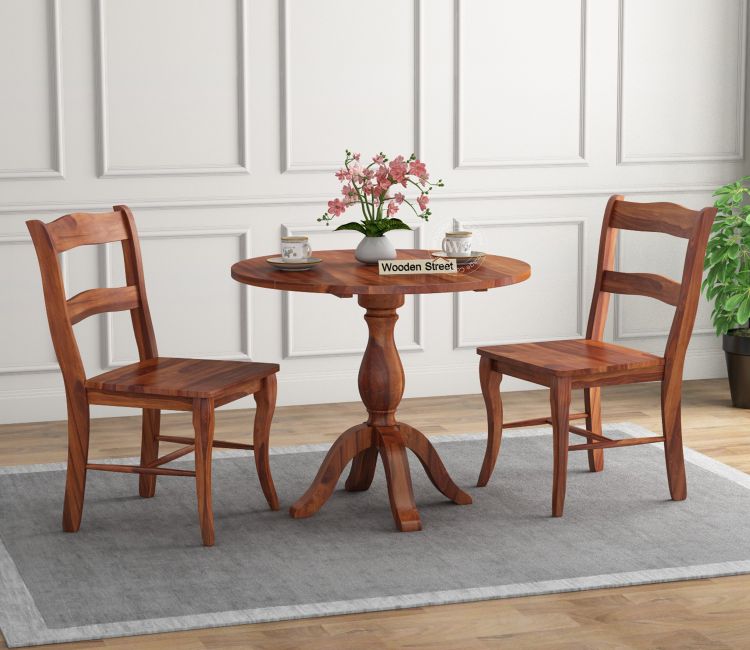A dining table set is more than just a piece of furniture; it is a central element in a home where families gather, share meals, and create memories. While its design and material attract attention, the joinery techniques used in its construction play an equally important role in determining its durability. Well-crafted joinery not only provides strength and stability but also ensures that the table remains sturdy for decades. Understanding these techniques can help you make informed decisions when choosing a dining table set that is built to last.
Why Joinery Matters in a Dining Table Set
Joinery refers to the method of connecting different pieces of wood without relying solely on nails or screws. This structural craftsmanship is what allows a dining table set to withstand daily use, weight, and movement without loosening or wobbling over time. When done well, joinery helps distribute stress evenly across the table, prevents warping, and enhances overall resilience. For those seeking a long-term investment, the type of joinery can be just as important as the type of wood.
Mortise and Tenon Joints – A Timeless Technique
One of the oldest and most reliable joinery methods, mortise and tenon joints have been used for centuries in furniture making. In this technique, a protruding piece of wood (the tenon) fits snugly into a matching cavity (the mortise) in another piece of wood. This creates a strong mechanical bond that resists pulling apart or twisting. In a dining table set, mortise and tenon joints are often used to attach legs to the table frame, ensuring that the structure remains stable even after years of use.
Dovetail Joints – Strength and Aesthetics Combined
Dovetail joints are commonly found in high-quality furniture and are recognized for their interlocking wedge-shaped cuts that resemble a dove’s tail. This joinery technique offers exceptional tensile strength, making it ideal for components like drawers in a dining table set’s storage unit or support beams under the tabletop. Beyond strength, dovetail joints are valued for their decorative appeal, as the craftsmanship is often left visible to showcase the skill of the maker.
Finger Joints – Precision and Surface Area
Finger joints, also known as box joints, use a series of interlocking rectangular cuts that increase the surface area for glue application. This results in a very strong bond that can handle substantial weight. In a dining table set, finger joints are particularly useful for connecting tabletops made from multiple planks, as they help maintain a flat, even surface while preventing separation over time.
Butterfly Keys – Functional Reinforcement
Butterfly keys, sometimes called bowtie joints, are not just decorative inlays; they serve a functional purpose. These are small, butterfly-shaped wooden inserts placed across joints or cracks in a tabletop to prevent further splitting. In a dining table set made from solid wood slabs, butterfly keys offer a balance between aesthetics and reinforcement, helping preserve the natural beauty of the wood while ensuring long-term durability.
Dowels – Modern Simplicity with Strong Results
Dowel joints use cylindrical wooden pegs inserted into aligned holes in two adjoining pieces of wood. When glued, dowels create a strong, hidden connection. This technique is popular for its simplicity and is often used in modern dining table set designs where a seamless, minimalist look is preferred. While not as strong as traditional mortise and tenon joints, dowel joinery still provides excellent stability when properly executed.
Corner Blocks – Hidden Structural Support
Corner blocks are triangular or L-shaped pieces of wood fixed into the corners where legs meet the frame. They add extra rigidity and prevent wobbling, especially in large dining table sets. While not as visually striking as other joinery methods, corner blocks are a practical solution that significantly extends the life of a table by absorbing lateral stress and supporting weight distribution.
Tongue and Groove – Stability for Large Surfaces
Tongue and groove joinery involves a protruding ridge (the tongue) on one piece of wood fitting into a matching slot (the groove) on another. This method is especially effective for joining wide surfaces like tabletops. In a dining table set, tongue and groove connections help maintain alignment, reduce gaps, and prevent warping, ensuring the surface remains smooth and level over time.
Choosing a Dining Table Set with Strong Joinery
When shopping for a dining table set, it’s important to pay attention to the joinery details. Look for joints that fit tightly without visible gaps, as this indicates precision craftsmanship. Tables with reinforced or traditional joints such as mortise and tenon or dovetail often provide better longevity compared to those held together with only screws or metal brackets. Additionally, well-finished joinery is less prone to moisture damage, which is crucial for furniture that will be used daily.
Maintenance to Support Longevity
Even the strongest joinery benefits from proper care. Regularly tightening any bolts or screws, avoiding excessive weight, and cleaning spills immediately can help maintain the structural integrity of a dining table set. Applying protective finishes periodically also helps prevent wood shrinkage or expansion, which can stress the joints. With consistent maintenance, high-quality joinery ensures that your dining table set remains as sturdy and beautiful as the day you brought it home.
Conclusion
A well-crafted dining table set owes much of its durability to the joinery techniques used in its construction. From the timeless mortise and tenon to the decorative yet functional dovetail, each method serves a specific purpose in enhancing strength, stability, and longevity. By understanding these techniques, you can make a more informed decision when selecting a table that will not only meet your style preferences but also stand the test of time. In the end, investing in strong joinery is investing in furniture that will remain a cherished part of your home for generations.

